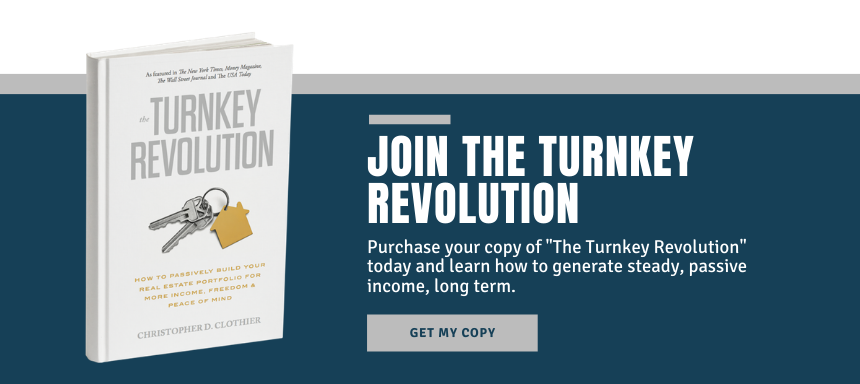 Every community has a distinct and unique environment. Their economy is their own, their job market is specific, and the real estate market is distinct.
Every community has a distinct and unique environment. Their economy is their own, their job market is specific, and the real estate market is distinct.
As real estate investors, it’s dangerous to treat any real estate market exactly like another. You’re dealing with an entirely unique set of factors that can profoundly affect not only your buying potential, but your investment opportunities, growth potential, passive income, and future risk.
For passive real estate investors, it’s crucial to know what market you’re dealing with before you invest. You need to know going in that it’s the right market for you and for the lifespan of your investments. Equipping yourself with market knowledge helps you dodge bad investments: whether they're in a bad market or just in a bad neighborhood.
But how do you thoroughly and properly analyze an investment market?
There are a few factors that investors should look at when checking out a real estate market that will help them evaluate whether or not it is investment-worthy.
You can pre-order your copy of The Turnkey Revolution, the first book release from Memphis Invest chronicling the best advice on how to safely build a passive portfolio from real investor experiences!
4 Factors for Investors to Consider in Real Estate Market Analysis
Supply, Demand, and Competition
One of the first and easiest things to investigate is the state of the real estate market. One of the things you want to pay close attention to is the state of the market’s supply. Are properties on the market moving, or are things stagnant? A slow market can be indicative of a lot of things, but regardless of the reason, it can be a red flag to look out for. It can be a sign of unaffordability, a lack of population growth (leading to a lack of demand) or, for individual properties that have been on the market for a long time, problems that need addressing.
Something else to investigate is your competition. For a real estate investor, your competition takes two forms: other buyers and other investors. When it comes to buyers, ask yourself: What is the market's month supply? Is it a buyer’s market or a seller’s market? This will give you an idea of how aggressive you need to be and how much room you have to negotiate.
When it comes to investors who are renting out properties and apartments, you have to compete with their rental rates. It’s valuable to know where these properties are, where they seem to do well, what vacancy rates are on average, and how rent costs have fluctuated over the years. You should know what you can expect to make and what neighborhoods seem to do well with rentals.
Signs of Economic Health
We’ve said it before and we’ll say it again: one of the greatest factors in determining a market’s success in real estate investment is its overall economic health. For a real estate investor, some of the signs to look for are job opportunities, diversity in the job market, economic development, business-friendly legislation, and population growth.
Other signs of economic health include new construction, both commercial and residential. You can find this information often in a market’s local news! See if businesses are opening more often than they’re closing.
What about household income? Is it trending upward, or is it stagnant? Is economic development a city or state priority? These are all things to consider.
Comparisons to Larger Trends
When looking at a market, it’s not enough to examine it in a vacuum. It’s necessary to put any given market in a broader context to understand where it fits in the grand scheme of things: both on a state level and on a national level.
For example, Little Rock, Arkansas has a higher percentage of renter households than the rest of the state of Arkansas. Its rate is much more in line with the national rate.
As real estate investors, knowing how prices, rental rates, and economic trends compare to state and national trends allows us to identify up-and-coming markets that offer opportunities. This is where predictions are made and one can jump on an opportunity before a trend really blows up.
Price Stability and Overall Affordability
For buy-and-hold investors, one of the most valuable factors in any real estate market is its stability. You’re looking for a market that is going to give you reliable returns. That’s why it is so valuable to examine rent fluctuations and pay close attention to how home prices shift.
Affordability matters: it can impact the economy, cause the population to shift, not only to different neighborhoods but to different markets entirely. The stability of prices and rent affects your passive income and whether or not your cash flow remains positive. You want investments that you can rely on, not a market that keeps you guessing.
For passive real estate investors, however, this investigative process can seem overwhelming. It's a lot to worry about! What you can do, however, is turn to turnkey investing. While looking into the markets you want to invest in is necessary no matter how you invest, turnkey investing offers a distinct advantage.
You have the security of knowing your turnkey provider is an expert in the markets they are in. They trust the real estate markets and the neighborhoods they've chosen. They picked them for a reason!
While due diligence is always necessary, as a turnkey investor, you have the advantage of their market experience and expertise. And that's priceless.
Join the Revolution Today - Get Your Signed Copy of The Turnkey Revolution!













